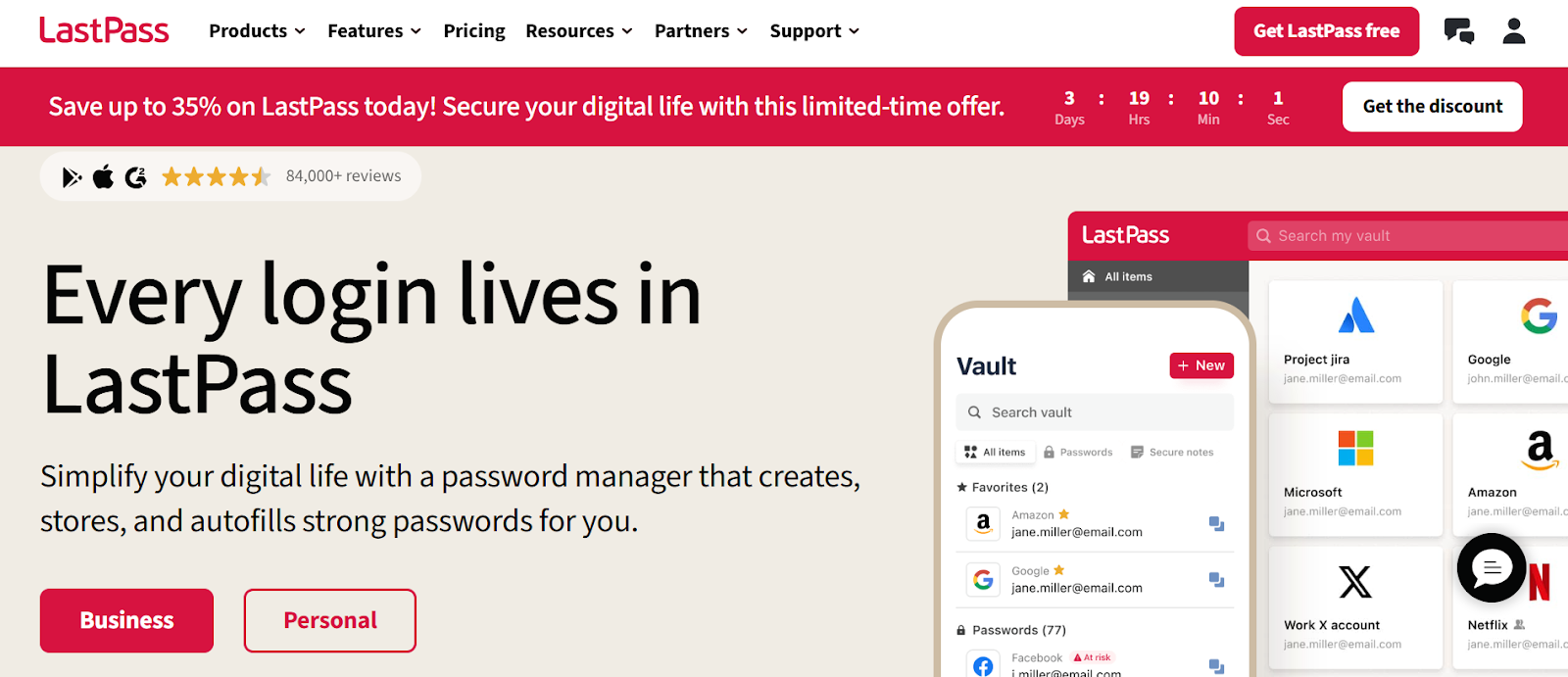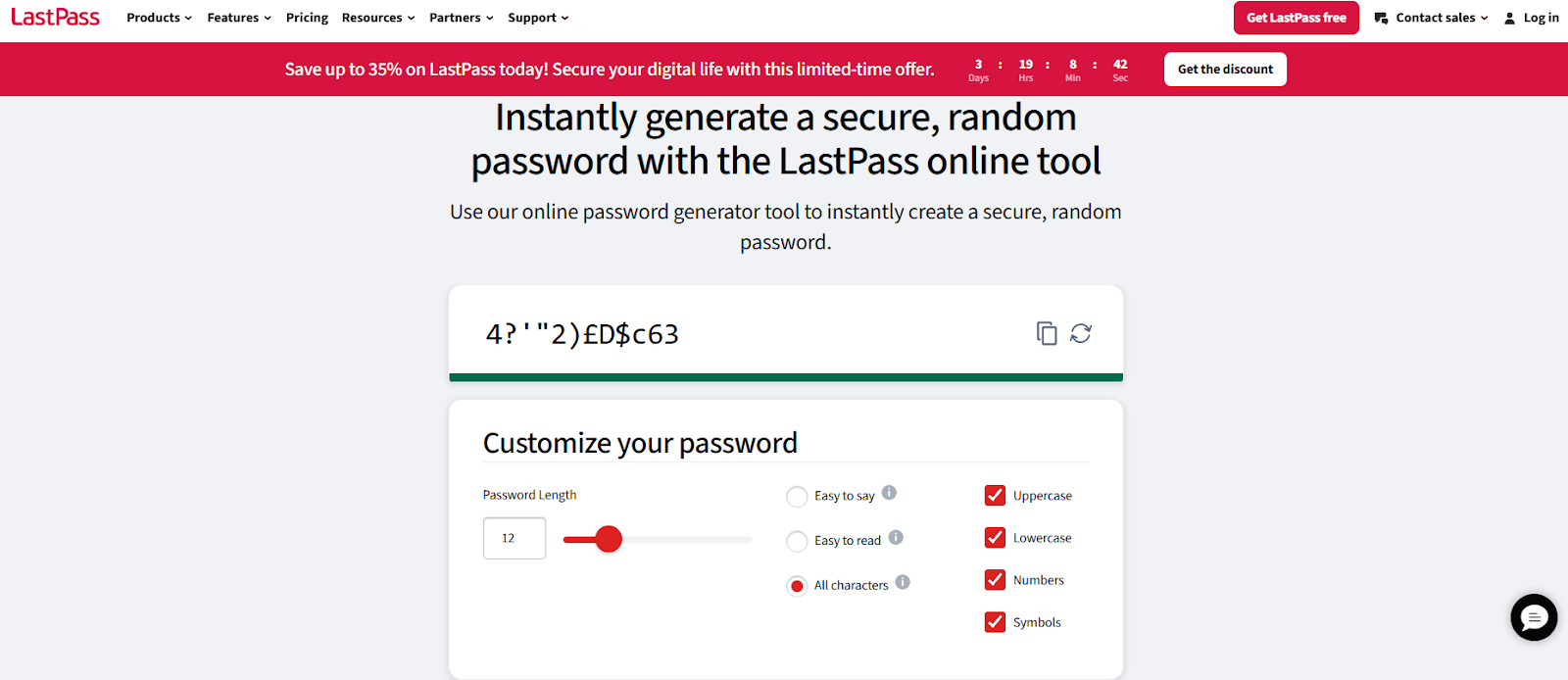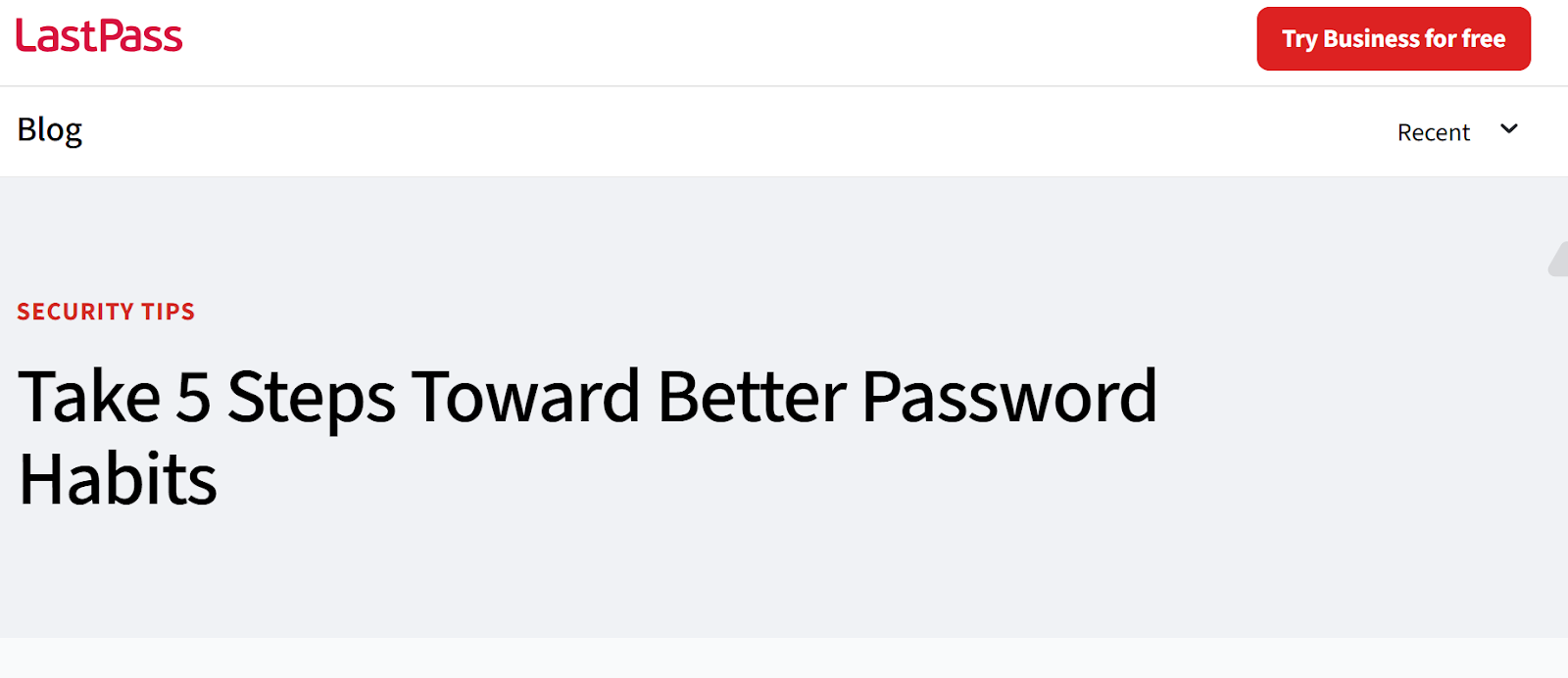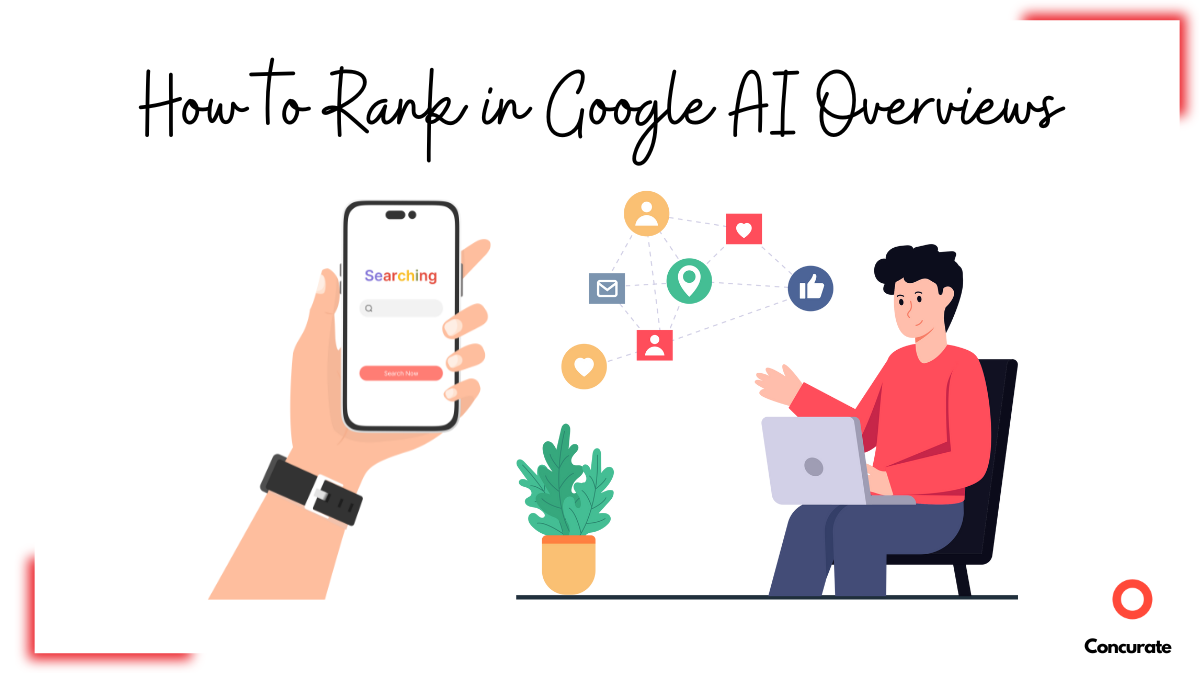Cybersecurity is a growing concern. Individuals and businesses need reliable password management solutions to protect sensitive data. LastPass has built a content strategy that doesn’t just attract visitors but it also captures high-intent traffic and converts users looking for immediate security solutions.
With more users actively searching for secure tools, visibility in search results is critical. Instead of relying on broad industry topics, its strategy is focused on ranking for decision-stage searches and keeping potential customers within its ecosystem.
A closer look at its organic performance reveals three major pillars that drive its success.

Source: LastPass
1. Ranking for High-Intent, Solution-Based Queries
Not all search traffic is valuable. LastPass ensures that it ranks for keywords with direct purchase or engagement intent. Queries where users are actively searching for password management solutions.
One of its most visited pages is the Password Generator tool. By providing an interactive tool rather than just an informational article, LastPass keeps users engaged while reinforcing its product’s value.
Branded search also plays a significant role in its success. Keywords like ‘LastPass login’ and ‘LastPass vault’ indicate user intent beyond research. These are people who are already considering or using LastPass.

Source: LastPass
Why This Works
- Focuses on problem-solving queries that capture immediate user interest.
- Uses interactive tools to engage visitors rather than just providing information.
- Ranks for branded searches, ensuring users stay within the LastPass ecosystem.
This approach of offering instant solutions through digital tools is also evident in How to Give a Live SaaS Demo, where interactive experiences help convert visitors into customers.
2. Dominating the Competitive Comparison Space
SaaS buyers don’t just search for individual products. They compare solutions before making a decision. LastPass capitalizes on this behavior by owning the comparison search space rather than leaving it to third-party sites.
Pages like “LastPass vs. 1Password” and “LastPass vs. Dashlane” break down features, pricing, and security capabilities. These decision-stage searches are critical because users evaluating multiple options are often closer to making a purchase.
Instead of letting review sites dictate the conversation, LastPass ensures that its product comparisons present its advantages clearly and persuasively. This content strategy allows potential users to make informed decisions without leaving the LastPass website.

Source: LastPass
Why This Works
- Captures buyers in the evaluation stage, preventing them from turning to competitors.
- Controls the narrative by keeping potential customers on its platform.
- Provides structured comparisons that simplify decision-making.
A similar data-driven approach to competitive positioning is seen in How to Capture Leads Like HubSpot, where conversion-focused content ensures that prospects remain within the brand’s ecosystem.
3. Driving Organic Traffic Through Security & Product-Focused Pages
Many SaaS companies struggle to balance educational content with product-driven SEO. LastPass executes this well by ensuring its top-ranking pages are closely tied to its core features.
Its homepage ranks for competitive searches like ‘password manager’ and ‘LastPass free’, ensuring that users searching for solutions land directly on the main product page. This keeps LastPass front and center for anyone looking for a password manager.
Additionally, LastPass ranks for security-focused content, including pages addressing password protection best practices and secure login strategy. These pages establish authority while subtly reinforcing LastPass’s advanced encryption and security measures, positioning the product as an industry leader.

Source: LastPass
Why This Works
- Homepage dominance ensures high visibility for competitive, solution-based searches.
- Security-driven content builds trust while reinforcing LastPass’s expertise.
- Product-led SEO ties content performance directly to business growth.
This trust-building content approach is effectively used in 20 SaaS Companies Nailing Content Marketing, where security and transparency play a key role in winning user confidence.
Why LastPass’s Content Strategy Delivers Results
Many brands struggle with content that generates traffic but lacks impact. LastPass takes a structured, high-intent approach that aligns content with business goals.
- High-intent pages ensure visitors are actively looking for solutions, not just general information.
- Comparison content captures buyers at a critical decision-making stage.
- Security-focused pages build trust and reinforce LastPass’s credibility.
This strategy ensures that organic visitors don’t just land on the site – they stay, engage, and convert.
Building a Content Strategy That Converts, Not Just Ranks
Many brands focus on traffic metrics without considering whether visitors actually convert. LastPass proves that ranking for the right searches is far more valuable than just increasing page views.
At Concurate, we help SaaS and B2B brands create high-intent, conversion-driven content. Instead of publishing generic blog posts, we build content strategies that align with business goals and drive measurable results.
If your content isn’t bringing in the right audience or guiding them toward conversion, it’s time for a new approach. Let’s craft a strategy that ensures every page serves a clear purpose and leads users toward action.






